Frequently Asked Questions
If you want your wildflower meadow to be long-lasting, sustainable and easy to care for, then getting your wildflower meadow maintenance regime right is essential. Here are some helpful Q’s and A’s to help you.
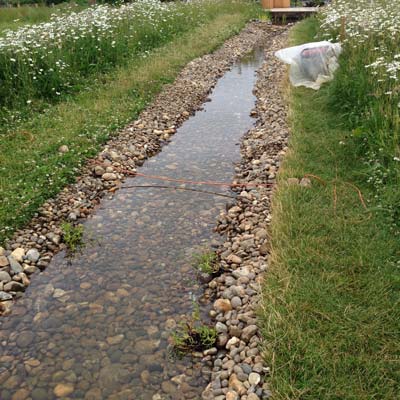
Wildflower areas are stunningly beautiful and relatively low maintenance. However, they do need a little annual TLC if their beauty is to be sustained.
When Is The Best Time To Cut My Wildflower Meadow?
I can’t sit here looking out of my window in deepest Norfolk and give you a date to mow your meadow. You need to decide for yourself based on things like local weather conditions, the species that are growing in your meadow, the time you have available and the growth stage of the plants.
The best reference for any wildflower meadow maintenance jobs is Mother Nature. When you can see that most of the plants in your meadow area have finished flowering you will know that Mother Nature has almost done her job for that season. It’s time then for you to intervene.
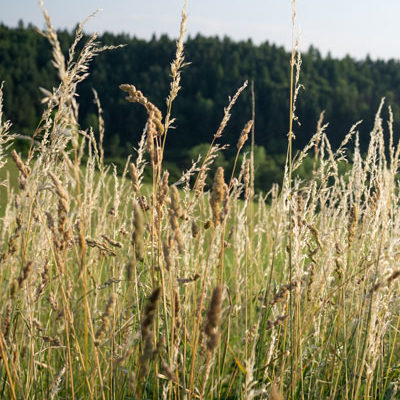
When your wildflower meadow has started to lose its colour and vigour towards the end of summer, it’s time to rejuvenate it by removing spent vegetation.
The purpose of a flower is to get pollinated and set seed so that the species won’t die out. Once that’s done, the plant will either die, or it will relax until next spring. (An annual plant will die after setting seed, a perennial will concentrate its efforts on strengthening the mother plant and surviving the winter)
When the seed has been set, then it’s time for you to remove the excess vegetation. That way you are allowing air and light into the crown of the mother plant.
Signs That Your Meadow Is Ready For Cutting
- Few visible flower heads and hardly any flower buds.
- Lots of brittle dry stems and seed-heads
- Overall appearance has turned from lush green to straw-coloured
- Vegetation falling over – even if it’s still green
What Tools Should I Use For Wildflower Meadow Maintenance?
You are trying to remove vegetation completely so that it doesn’t add nutrients to the soil. A strimmer is a bad choice of tool because it will flay the vegetation and spray little bits hither and thither.
Traditionally a scythe would be used however, not many people have them in the shed any more.
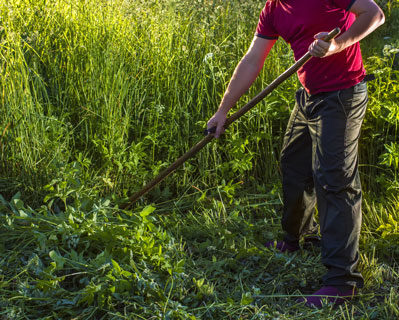
A lawnmower cuts the sward too short and probably won’t cope with the sheer bulk of leaves and stems to be cut and collected.
For wildflower meadow maintenance in small areas, use garden shears.
For larger areas, it’s worth investing in a long-handled hedge trimmer.
Will All Of The Wildflower Species I Sow Establish Equally?
Whether you are sowing wildflowers from seed or using a pre-grown matting to establish your mini-meadow, don’t expect to see every species every year. These plants are fickle. The weather conditions need to be right or they won’t grow. If the soil doesn’t have their preferred balance of nutrients – they won’t grow. If they don’t like the neighbouring plants – they won’t grow.
You must be prepared to enjoy what does grow and expect to see a different balance of species every year. With wildflowers, each season brings a new surprise. Some are good, some are disappointing. All are interesting.
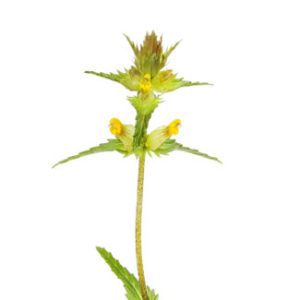 |
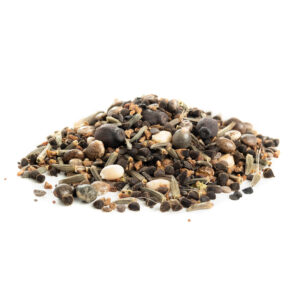 |
|
 |
 |
Why Is There So Much Grass In My Wildflower Area?
This is one of the things we get asked a lot. If this is one of your concerns – you are not alone.
First of all – grass is good. It will provide good soil coverage in wintertime when some of the flowering plants are dormant. This is a major benefit in your wildflower meadow maintenance routine as it reduces your workload. That’s great for wildlife habitat and it’s great for keeping the soil warm and moist so that seeds can germinate.
If you feel you have too much grass, think about the time of year. In autumn, winter and early spring some of the flowering plants are dormant. You won’t see their foliage but that doesn’t mean they’re not there.
Now think about the soil type – is it low nutrient? Truly low nutrient soil is hard to find. Most of our gardens have been improved over the years. If you are in a new-build, the chances are it was built either on an existing garden or on farmland. Both will have been well fed. Grass thrives in well-fed soil and tends to outcompete some wildflowers.
Your meadow management can reduce soil fertility – but it will take a long time.
How Do I Get More Flowers And Less Grass?
Be prepared to take a little extra time in your autumn wildflower meadow maintenance to weed out some of the grasses and reseed (or plug plant) the bare patches with wildflowers. There’s an amazing little bi-annual plant called yellow rattle that you ought to add to your species mix. The seed must be sown fresh every autumn into fairly bare ground. When it starts to grow it takes its nutrients from the grass plants which makes them weaker. Farmers hate yellow rattle, gardeners love it.
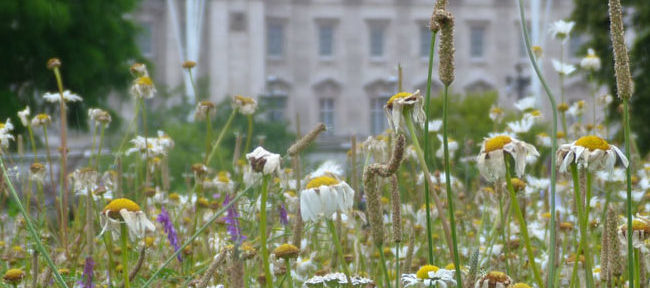
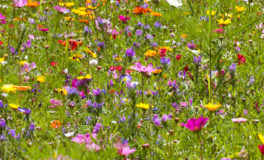 Meadowmat Species
Meadowmat Species 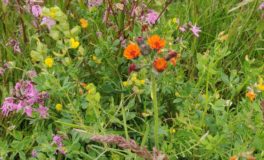 Caring for your new Meadowmat wildflower turf
Caring for your new Meadowmat wildflower turf  ‘Coronation Meadows’ to revive wildflowers
‘Coronation Meadows’ to revive wildflowers 

